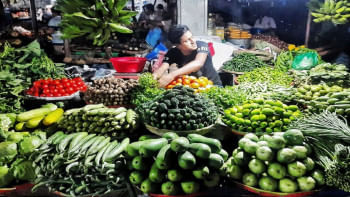Pros and Cons of Red Meat

The love for red meat knows no bounds especially when Eid-ul-Azha is just around the corner. You could be one of the passionate buyers intensely searching through the herd in Gabtoli, Saidabad, or Rayer Bazar for the best buys; or you might even be a dedicated cook who has already pinned a gazillion red meat recipes on Pinterest for Eid. No matter where you stand on what can easily be termed 'the red-meat fever,' there is always more to your favourite wonder meat than meets the eye.
The yummy goodness
Mouth watering beef curry, kacchi biryani, chaaps, and mutton chops are just a few of the numerous delicacies that come to one's mind when thinking about red meat. But its taste is not all that draws one to red meat. Unknown to many, red meat has high nutritional value, being rich in proteins and minerals. Want to build muscle or get stronger? No worries, just add a little more beef or mutton to lunch and you shall be reaching those health goals in no time! In fact, red meat can even help you attain your non-health related goals! Being high in omega-3 fatty acids, which reduces chances of anxiety and depression, red meat has been proved to elevate moods, thus naturally giving you a boost in life.
For the workaholics who are often drained of energy, the iron-rich red meat can indeed do wonders for their stamina. This high iron-content is also one of the reasons why red meat is highly recommended for children, and can thus reduce their risk of developing anaemia, which is an iron-deficiency disease. Moreover, its high zinc content is also ideal for strengthening your immune system, especially during this season when diseases and flu are rampant. While you can get zinc from other sources, such as grains, the body absorbs zinc better when it comes from meat, thus making it an integral part of your diet.
The darker side of red meat
While this wonder meat may indeed seem too good to be true, there are a few red alerts one needs to take into consideration before they decide to go on a gobbling spree this Eid. For one, beef and mutton are quite high in saturated fats. This fat can accumulate in your blood vessels and thus make it harder for your heart to pump blood and your brain to receive blood, thus increasing your risks of heart diseases and strokes.
In fact, increased intake of red meat can also heighten your risk of type 2 diabetes because of its high sodium and nitrite content. What these minerals do is that they raise your blood pressure and make it harder for your body to absorb the glucose, which is the sugar in your blood. One of the biggest concerns regarding eating red meat though is that it has been termed as carcinogenic, which means that it can cause cancer, especially bowel cancer. While scientists are still hard at work trying to find a proper explanation, it has also been shown that one can slightly reduce the risk by increasing vegetable consumption.
What people often forget is that a lot of the health benefits and risks depend on how the meat is processed and cooked. For example, while a grilled beef burger may not be advisable for a diabetic, a bit of boiled beef is allowed. Just like everything else in life, moderation is key when it comes to consuming red meat. While it might not be wise to solely live on beef for the entire two months after Eid, it does not mean you have to deny yourself an extra piece of that delicious Rezala during a family gathering on the second day of Eid.
Photo: Sazzad Ibne Sayed
Food styling and preparation: RBR

 For all latest news, follow The Daily Star's Google News channel.
For all latest news, follow The Daily Star's Google News channel. 



Comments